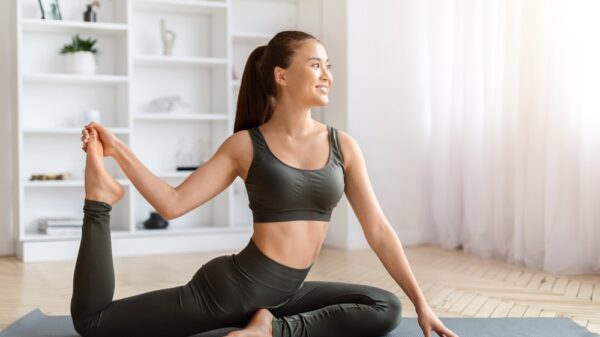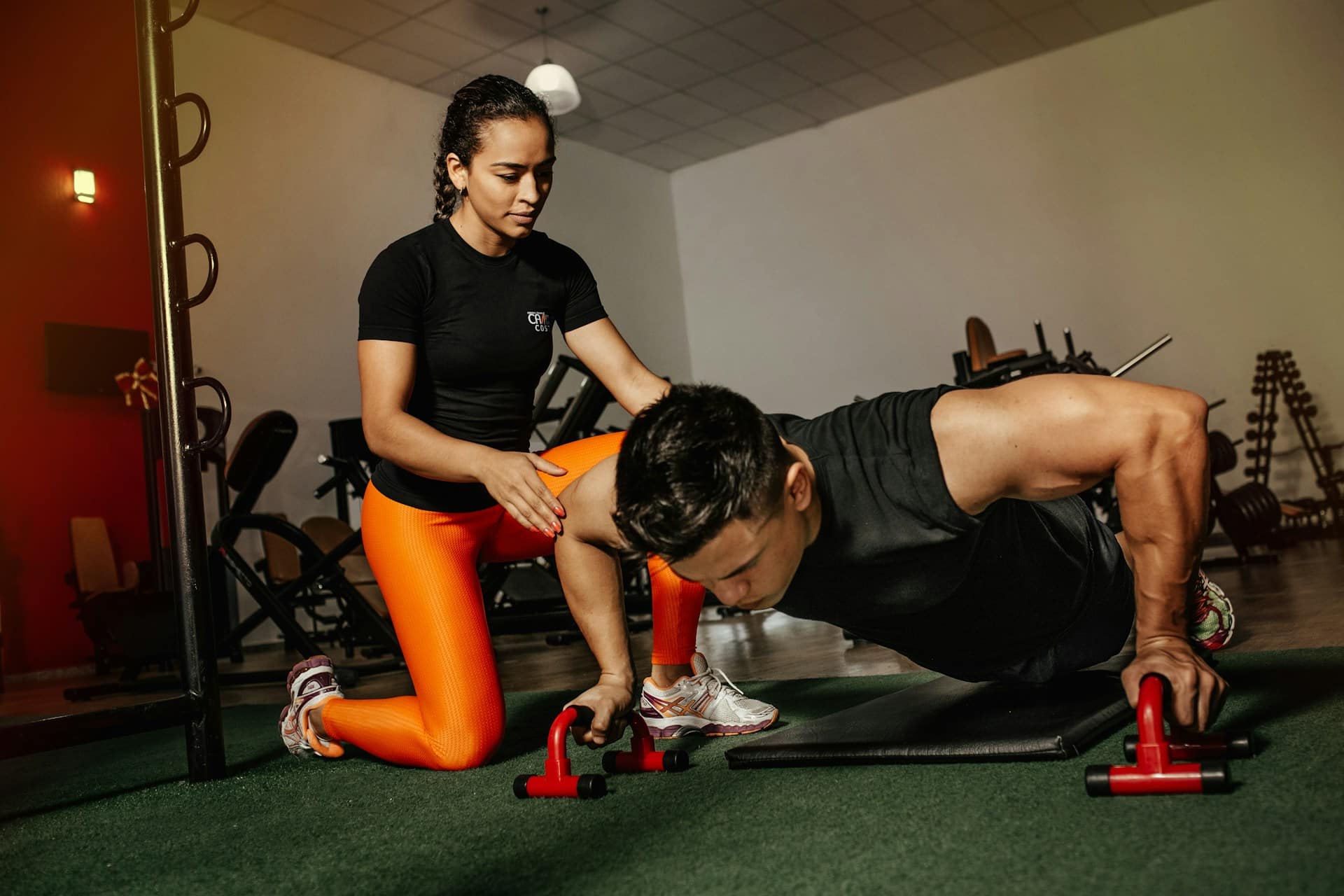Latissimus dorsi muscles, more commonly known as “the lats,” are the prominent muscles of your back, serving as silent supporters in many upper-body actions. Their roles extend beyond mere aesthetics; they are fundamental for a wide array of movements, from raising your arms to ensuring your spine remains stable.
Movement often evokes images of arm swings during a jog or lifting weights overhead, yet the lats work diligently behind the scenes, ensuring these actions occur seamlessly. Even those who work out regularly may find their lats tightened, which can lead to persistent shoulder and lower back discomfort.
If you haven’t yet integrated strength training into your routine, consider prioritizing exercises that focus on your lats. Research published in the *Journal of Orthopedics* indicates that tight lats can hinder shoulder functionality and lead to chronic pain. It’s a feedback loop; tight lats may spawn issues that reach beyond just back discomfort.
Focusing on exercises that engage your lats can pave the way for enhanced balance, stability, and upper-body strength. Almost anyone can reap the benefits of incorporating lat-focused movements into their fitness regimen.
Let’s take a closer look. Situated in your back’s central region, the lats are large, flat muscles that operate alongside the trapezius. They connect your spine to your upper limbs, playing a pivotal role in trunk stability. Extending down to the upper glutes, the lats are essential for maintaining an upright posture. If you often find yourself slumped at a desk, your lats might be contributing to that discomfort.
The functions of your lats are varied and significant:
– Arm Movement: They facilitate raising your arms in multiple directions. The next time you swing your arms during a walk, acknowledge your lats for that smooth motion.
– Adduction: They draw your shoulders toward your body’s midline, effectively bringing your arms closer to you.
– Internal Rotation: They aid in rotating the shoulder joints, ensuring stability during arm movements.
– Core Stability: Supporting your lumbar spine, the lats play a crucial role in preventing back pain as you engage in various activities.
So, what advantages do strong lats offer? Here’s a breakdown:
1. Enhanced Shoulder and Upper Arm Strength: Your shoulders endure a lot through daily activities, from lifting weights to carrying bags. Robust lats provide essential support in these movements, making them vital for injury prevention and overall comfort.
2. Improved Core Stability: Your core acts as a foundation. Strong lats contribute significantly to this, promoting good posture and warding off posture-related discomfort, which can lead to headaches and other issues.
3. Boosted Sports Performance: Whether you’re playing basketball or engaging in any physical activity, strong lats facilitate the movements necessary for agility and rotation, enhancing athletic capability.
4. Injury Prevention: Proper strength and flexibility help your lats create a solid support that reduces the risk of injuries, particularly in the shoulders and lower back. Maintaining balanced muscle strength allows you to move freely without concern for strain.
Incorporating lat exercises into your routine can be a straightforward yet impactful way to enhance not only your strength but also your overall physical wellness. Prioritizing your lats can simplify daily tasks, elevate athletic performance, and yield long-term health benefits as you age. So, give your lats the attention they require.
Your lats play a vital role in keeping your back both strong and flexible. When aiming for proper posture and reduced back discomfort, understanding the lats’ contributions becomes essential, especially during movements like twisting or lowering your hips. These muscles work in concert with your obliques and abs, forming a sturdy framework that supports your spine and allows for greater range during various activities.
For those involved in sports like tennis, golf, or basketball, realizing the importance of a strong core is crucial. A stable core not only improves your performance but also aids in shedding unwanted back fat—often a common concern. Whether you’re jogging or simply navigating daily tasks, maintaining activities that engage your lats can vastly improve your comfort and functionality.
Understanding the anatomy of your lats reveals their importance. They connect with stabilizing muscles and facilitate shoulder and arm movements, originating from the iliac crest (at the top of your pelvis) and extending to the thoracic vertebrae, providing much of your upper body strength. Strengthening your lats also engages other muscle groups like the shoulders and biceps, creating efficient movement patterns.
However, common issues can arise in the lat region that may lead to discomfort or injuries. Weak lats can arise from various factors, such as insufficient overhead activities, poor posture, or prolonged sitting. If you find yourself seated for long periods—either at work or home—this may lead to stiff shoulders and tension in your back muscles. Such posture not only causes pain but can also limit your mobility.
What happens when your lats aren’t functioning optimally? You may encounter shoulder pain, as any tightness can translate into discomfort within your shoulder joints. Back pain is also prevalent since your lats support both the thoracic and lumbar regions of your spine. When those muscles are weak or imbalanced, it can contribute to persistent discomfort.
Muscle imbalances can further complicate matters. Studies, including those from *Men’s Journal*, reveal that it’s common to have one lat stronger than the other. This imbalance can impact your posture and add unnecessary strain on your spine. If you consider yourself sedentary, older, or dealing with weight fluctuations, you’re likely familiar with the repercussions of a weak back. Thankfully, exercises paired with consistent stretching can help correct these imbalances, improve flexibility, and enhance posture over time.
You don’t need a gym membership to strengthen your lats. Simple bodyweight exercises and stretches can be effective. Movements like pull-ups or lat stretches can relieve stiffness and promote strength. Taking the time to care for your lats will support not just your workouts but your overall quality of life.Focusing on the latissimus dorsi (lats) is not just about enhancing athletic performance; it significantly impacts your daily wellbeing. Strengthening these muscles helps you move better in everyday tasks, whether it’s lifting groceries, keeping up with your kids, or enjoying leisure activities. Here’s a straightforward guide to elevate your back strength for a healthier lifestyle.
Incorporating targeted exercises for your lats can make a noticeable difference in your overall fitness. These large muscles in your upper mid-back are essential for numerous movements involving your arms and shoulders. Aim to integrate a couple of effective exercises into your weekly routine, with 10-15 repetitions each. Consider performing these sessions once or twice each week. After your workouts, incorporate stretches to promote flexibility and recovery.
Lat Exercises
1. Lat Pulldowns Using a Machine
This exercise is a classic for effectively engaging the lats. Most gyms have dedicated machines available. Perform it either seated or kneeling; choose whichever position allows a comfortable grip on the bar above your head. Pull the bar down to your chest while keeping your back straight to ensure you’re working your lats and maintaining good posture. Gradually return the bar to the start position, and watch your endurance build over time.
2. Lat Pulldowns With Resistance Bands
If gym equipment isn’t accessible, resistance bands offer a fantastic alternative. Secure a band to a sturdy anchor point and hold the ends in both hands. Start with your arms extended overhead, then pull the band down to your chest by bending your elbows. This not only strengthens your lats but also engages your shoulders and core, enhancing your overall body stability.
3. Chin-Ups
Chin-ups target your upper body effectively, though they can be challenging. Grab a pull-up bar with your palms facing you and your arms extended. Pull your body up towards the bar, keeping your body straight. If you find them tough initially, use a bench for support under your feet or an assisted pull-up machine at the gym. Start with lower repetitions and increase them as your strength improves.
4. Seated Rows
Using a seated row machine allows you to hit your lats while also engaging your biceps and shoulders. With your knees slightly bent and back straight, pull the handles towards you, bending your elbows and squeezing your shoulder blades together. This controlled movement reinforces your back muscles and improves your posture.
5. Dumbbell One-Arm Rows
Stand next to a bench with one knee and one hand resting on it, holding a dumbbell in the opposite hand. With a straight torso, pull the dumbbell towards your side, focusing on using your lats. This exercise not only builds strength but also improves your balance and coordination.
6. Laying Trunk Lifts (Supermans)
For an added challenge for your back, try Superman lifts. Lie on the floor with your fingers behind your head and lift your upper body off the ground, engaging those back muscles while keeping your legs grounded. Lift your feet if you want an extra challenge.
7. Yoga Chair Pose (Held Squat)
Incorporate some yoga into your routine with the chair pose, which enhances balance while stretching the lats. Stand with your feet together, arms overhead, and sink your hips back as if sitting in a chair, keeping your back straight. This pose stretches your lats and strengthens your legs and core.
Lat Stretches
1. Standing Overhead Reach
Don’t skimp on the cooldown after your workout. A simple overhead reach can stretch your lats effectively. Stand tall, extend your arms above your head, and gently bend from side to side to elongate the lats and relieve tension.
2. Cat-Cow or Kneeling Arm Stretches
These dynamic stretches ease upper back tension. Kneeling, extend your arms overhead, reaching with your fingertips. Transition to the cat pose by arching your back, then shift to cow pose by lowering your belly and lifting your head and tailbone. Hold each position for 10 to 30 seconds as you breathe deeply.
Precautions
Always listen to your body. If you feel pain during your workouts or experience discomfort that lasts for more than a few days, take a break. Begin with lighter weights, prioritizing proper form over pushing your limits. Should you notice swelling or persistent discomfort, consulting a professional—like a doctor or physical therapist—may be wise.
Key Takeaways
– The lats are essential for daily movements, arm extension, and providing core stability.
– Weak lats can lead to discomfort, particularly if you have a sedentary lifestyle or skip stretching. This can result in chronic back pain or shoulder tension.
– Targeting your lats through exercises such as pulldowns, chin-ups, and rows can strengthen your back and improve your overall physique.
Investing in your lats pays dividends in everyday strength and overall health. Start your journey today and celebrate the benefits!
































